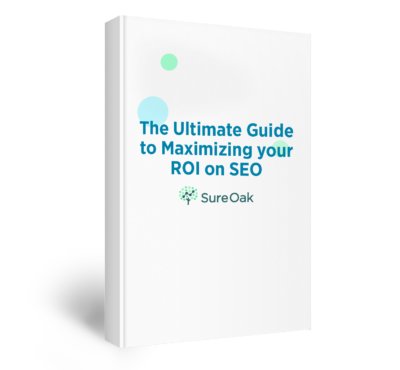Andres Aguero is a high-level SEO with deep on-page knowledge. Coming from web development, he understands the technical details and combines them with broad strategies for successful keyword research here at Sure Oak. On this week’s episode, he breaks down the (sometimes overwhelming) process. From keyword discovery to keyword filtering to keyword clustering to site optimization, Andres guides listeners to the right keyword.
Starting Keyword Research
Andres says it straight: “If you don’t have keyword research done before a campaign or before starting a business, you’re setting yourself up for failure.”
Even niche markets can have 1000 keywords.
Using the right keywords is crucial to be found by your market amongst the noise. But, how do you find the right keywords for your website?
The first step is to prepare your research with these 3 questions:
- Where are you targeting?
- Who is your audience?
- Who are your competitors?
With thoughtful answers to these questions, you will have a clear starting point for your keyword research.
Competitors are Key
Andres very wisely takes the Tony Robbins school of thought to marketing:
Find the people who are successful in your area and replicate their success.
Specifically, he advises selecting three high-performing competitors for three stages of your business:
- A model for where you would like to be in the future
- One for the medium term
- A close competitor for near-term comparison
Your marketing budget may not be near your future model competitor, but their tactics and keywords may be useful models.
Keywords Discovery
Competitor landing pages are the first review point for keywords. Enter competitor sites into Google Keyword Planner. This tool produces helpful ideas that are very relevant to your business.
Then, pull your keyword impression data from Google Search Console and Google Analytics. This is real impression data and is more reliable (especially from Search Console and not Google Analytics).
With all sets of keyword data:
- Remove brand names
- Remove unrelated or irrelevant keywords to your business
Then, with this smaller list, find search volume for each keyword. These tools are a “lifesaver for all SEOs.”
Keyword Analysis
Then, the real work begins. Keyword analysis and filtering take the longest in the keyword research process. Move your data to a spreadsheet to analyze easier.
Find the keywords with a high occurrence – these are your hot words. Frequently-occurring keywords indicate they are important in your niche.
Look for and flag variations of keywords, such as synonyms or similar stems. For example, note the variations in:
- Sourcing
- Source
- HR sourcing
- Recruiting
- How to do sourcing
Also, note the long-tail keywords that are targeted to your business.
Keyword Clustering
With your refined list of hotwords, break them into clusters. The grouping depends on your business. It may connect to distinct services or product groups or themes within your business.
Separate the clusters into different tabs for easy review.
Now, you have a blueprint for optimizing your website and creating new, valuable content.
Keyword Optimization
Based on the keyword clusters, return to the associated parts of your website and revise the content.
For example, if a landing page focused on HR sourcing, rewrite or revise the content to include the HR sourcing cluster keywords in the text.
In 2018, the most important features to optimize are:
- Content
- Title
- Description
- URL
- Headers
Content is by far the most important piece. Ensure keywords are in the content. But, be careful of excess as keyword stuffing has to be avoided. User experience cannot be compromised to fit in more keywords.
Content Planning
These clusters may provide ideas for your site you hadn’t realized were valuable to your audience. Review the clusters and keywords to spark ideas for new landing pages, new blog posts, and other content.
Look at the current keywords and see the content your competitors are ranking for. Mix these successful content types with your hotwords for a solid content strategy.
And make it lengthy. Long content, like a resource guide, gets more clicks and backlinks than short content, like a 300-word blog post.
KEY INSIGHTS
- Look to your competitors for successful keywords and content.
- Invest the time in keyword analysis and clustering: it becomes a site blueprint.
- Optimizing content with keywords but maintain user experience.
ANDRES’ TAKEAWAYS
- Keyword research is an essential first step in any marketing campaign.
- Take advantage of online tools to pull keywords, search volume, and keyword sorting.
- It’s important to know how to ask the right questions and how to find the right resources.
We can help in your Keyword Research. Check out:
Sure Oak’s Advanced Keyword Research Services
Sure Oak’s Keyword Research Process
Podcast: Play in new window | Download





